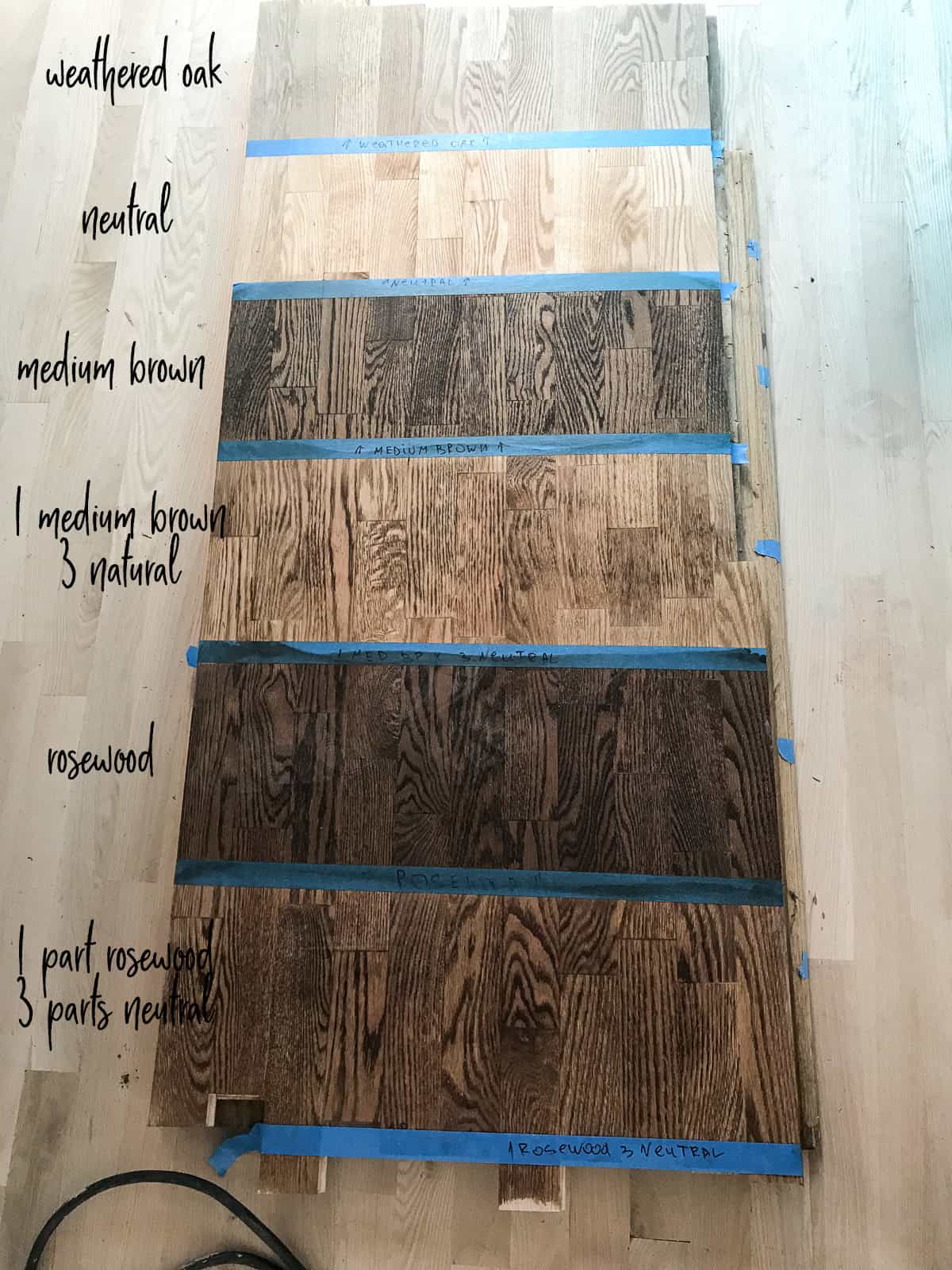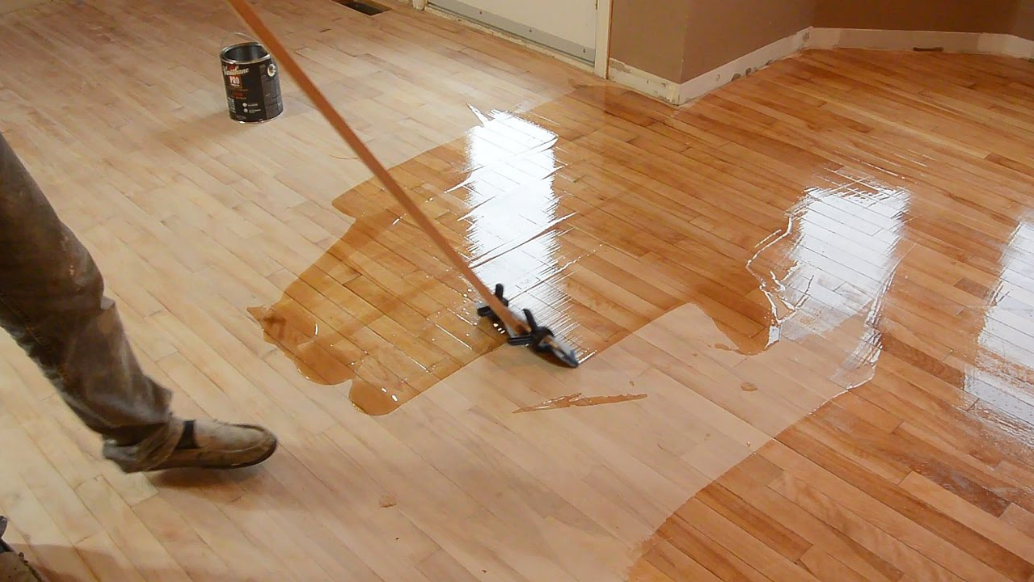Have you ever looked at those gorgeous, rich tones of stained hardwood floors and thought, “I want that in my home!” But then reality set in, and you imagined the messy, time-consuming process of sanding down your old floors. You might have even heard the tantalizing whispers that you could stain floors without sanding, maybe even just using a special paint!

Image: decorhint.com
The idea of staining hardwood floors without sanding is incredibly appealing – a shortcut that could save a lot of time, dust, and maybe even some money. But before you grab that stain and start dreaming of a beautiful new floor, it’s crucial to understand the facts, the challenges, and the potential downsides of skipping this critical step. This article will delve deeper into the “can I skip sanding?” question, exploring the different scenarios, the pros and cons of each approach, and ultimately help you decide if it’s the right choice for your home.
What’s The Big Deal With Sanding?
Sanding hardwood floors is an essential step in the refinishing process, not just for aesthetics, but for ensuring a long-lasting and high-quality finish. Here’s why sanding is often considered a non-negotiable:
1. Removing Old Finish: Sanding gets rid of the existing finish – whether it’s varnish, polyurethane, paint, or even just a previous layer of stain. This creates a clean slate for the new stain to penetrate and adhere optimally. If you try to stain over an existing finish, the results will likely be uneven, blotchy, and not as long-lasting.
2. Creating a Smooth Surface: Sanding smooths out any imperfections, scratches, or dents in the wood. This creates a uniform surface that allows the stain to be applied evenly and creates a polished, aesthetically pleasing finished look.
3. Preparing the Wood for Staining: Sanding opens up the wood pores, making it more receptive to the stain. This helps the stain penetrate deeper, resulting in a richer, more vibrant color. Without sanding, the stain may simply sit on top and look patchy or faded.
4. Encouraging Adhesion: Sanding creates a slightly roughened surface that helps the new finish adhere more securely. This means your new stain and topcoat will last longer and resist chipping or peeling.
So, Can I Stain Without Sanding? The Short Answer: Sometimes…
While sanding is always the ideal option for a flawless and durable finish, there are a few situations where you might be able to get away with staining without sanding:
1. Newly Installed Floors: If you’re working with brand-new, unfinished hardwood floors, you may be able to stain them directly without sanding. However, the wood should be properly cleaned and prepared according to the manufacturer’s instructions.
2. Lightly Worn Floors: If your floors have only minor wear and tear and still have a good existing finish, you might be able to use a “stain and seal” product. These products combine a stain with a sealant in a single application, allowing you to refresh the color without sanding. However, these products might not always penetrate the wood as deeply as traditional stains.
3. Limited, Localized Staining: If you only want to refresh the color of a small area, such as a hallway or a specific room, you could consider using a gel stain. Gel stains are thicker and less likely to bleed into the surrounding wood, which reduces the risk of creating a noticeable difference in the color when applied over an existing finish.
4. Using a Stain-and-Seal Product: As mentioned above, stain-and-seal products are designed to refresh existing floors. They combine the staining and sealing processes in a single step, often requiring less preparation and a shorter drying time.
The Caveats: Why You Should Proceed With Caution
While the scenarios above offer hope for those looking for a sanding-free solution, it’s crucial to understand the potential drawbacks. Staining without sanding is almost never as easy, as reliable, or as long-lasting as the traditional method:
1. Uneven Color: Without sanding, the stain might not penetrate the wood evenly, resulting in an uneven, blotchy finish. This is particularly true if your existing finish isn’t perfectly smooth or if you have different types of wood in the floor.
2. Potential Peeling or Chipping: Even a stain-and-seal product might not adhere as well as a traditional stain applied over a sanded surface. This could lead to peeling or chipping over time, especially in high-traffic areas.
3. Shortened Lifespan: Without sanding, you’re essentially covering up the existing imperfections in the floor. This may result in a shorter lifespan for your finish, potentially requiring refinishing more frequently.
4. Limited Color Options: Stain-and-seal products often have a more limited selection of colors compared to traditional stains.
5. Inconsistent Results: The outcome of staining without sanding is more unpredictable, as you’re working with a pre-existing surface that may not react as cleanly or uniformly to the stain.
6. Compromised Durability: Even if a stain-and-seal product provides an aesthetically pleasing finish, it may not offer the same level of durability as a traditional stain and polyurethane topcoat. This could be problematic in areas that experience heavy foot traffic or moisture.

Image: www.charlottehardwoodflooringpros.com
What To Do If You Really Want To Skip Sanding: A Step-by-Step Approach
If you’re dead set on skipping the sanding step, here are some things you can do to improve your chances of success:
-
Thorough Cleaning: The floor must be squeaky clean before you apply any stain. Use a strong cleaner specifically designed for hardwood floors to remove dirt, grease, and old wax.
-
Patching and Repairing: Fill any cracks or gaps with wood filler. Even if you’re not sanding, it’s essential to create as smooth a surface as possible.
-
Using a Primer: Applying a primer can help to improve the adhesion of the stain to your existing finish. You can find primers specifically designed for staining hardwood floors.
-
Choosing the Right Stain: Opt for a water-based stain, as it tends to penetrate better and dry more consistently than oil-based stains.
-
Testing in an Unnoticeable Area: Do a test patch in an inconspicuous area before applying stain to the entire floor. This will help you determine how the stain will react to your existing finish and whether you need to adjust the application method.
-
Apply Thin, Even Coats: Apply the stain in thin, even coats, using long strokes and following the manufacturer’s instructions. Avoid applying too much stain, as it can result in uneven color.
-
Allow Sufficient Drying Time: Allow each coat of stain to dry completely before applying the next.
-
Use a Quality Sealant: Applying a polyurethane sealant will protect the stain and enhance its durability. Select a sealant that’s compatible with the type of stain you used.
Can I Stain Hardwood Floors Without Sanding
Should You Stain Hardwood Floors Without Sanding? Weighing the Costs and Benefits
Ultimately, the decision to stain hardwood floors without sanding is a personal one. It’s a bit of a gamble, especially if you’re dealing with older floors or significant imperfections.
Here’s a quick recap to help you decide:
- Go for Sanding: If you want the most durable and aesthetically pleasing finish, sanding is always the best option.
- Consider Staining Without Sanding: If you have brand new floors, minor wear and tear, or a very small area to stain, explore stain-and-seal products or gel stains.
If you’re still unsure, consult with a flooring professional to discuss your options and determine the best approach for your specific situation. Remember, the goal is to create a beautiful, long-lasting floor that you can enjoy for years to come!






